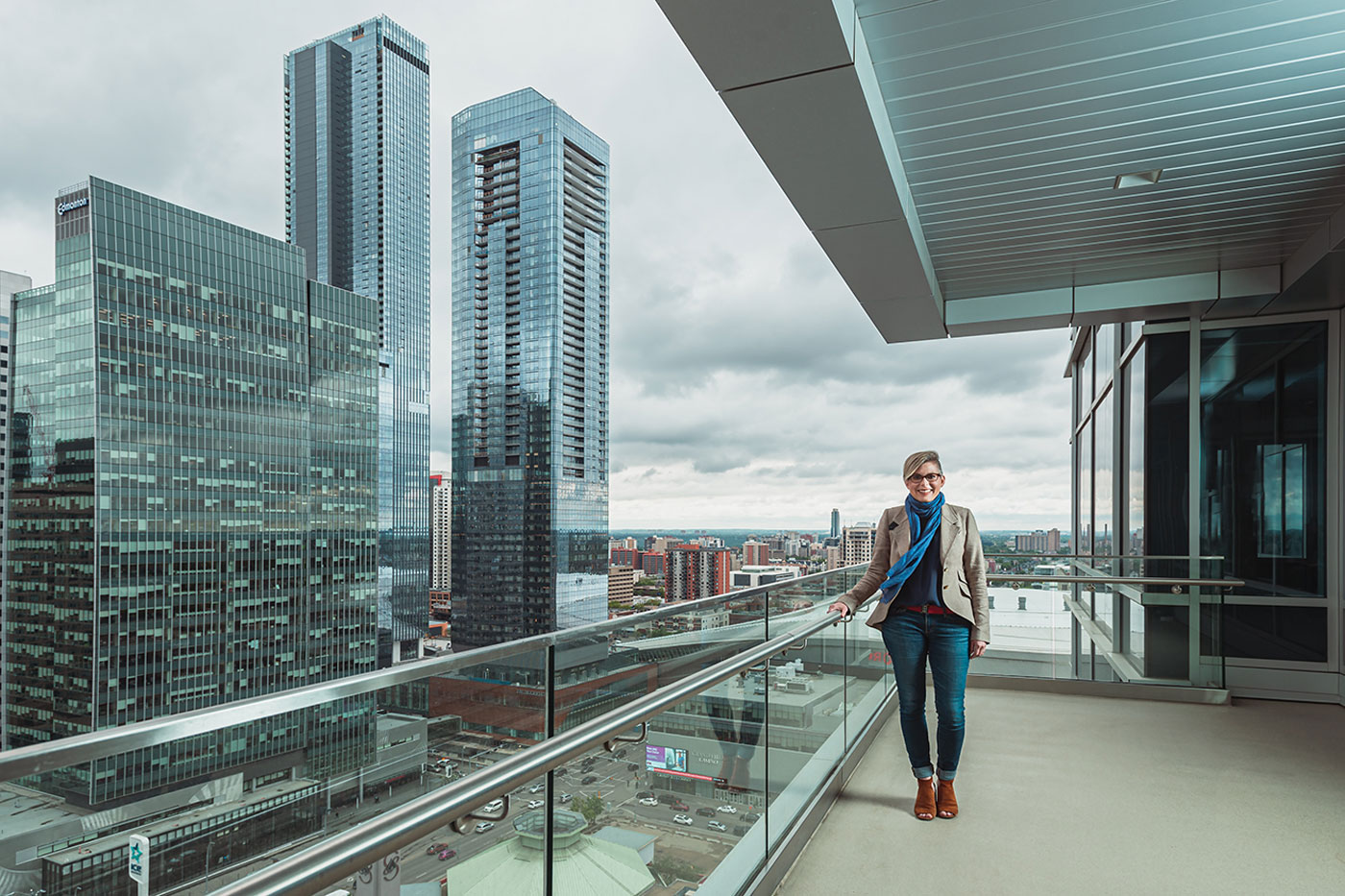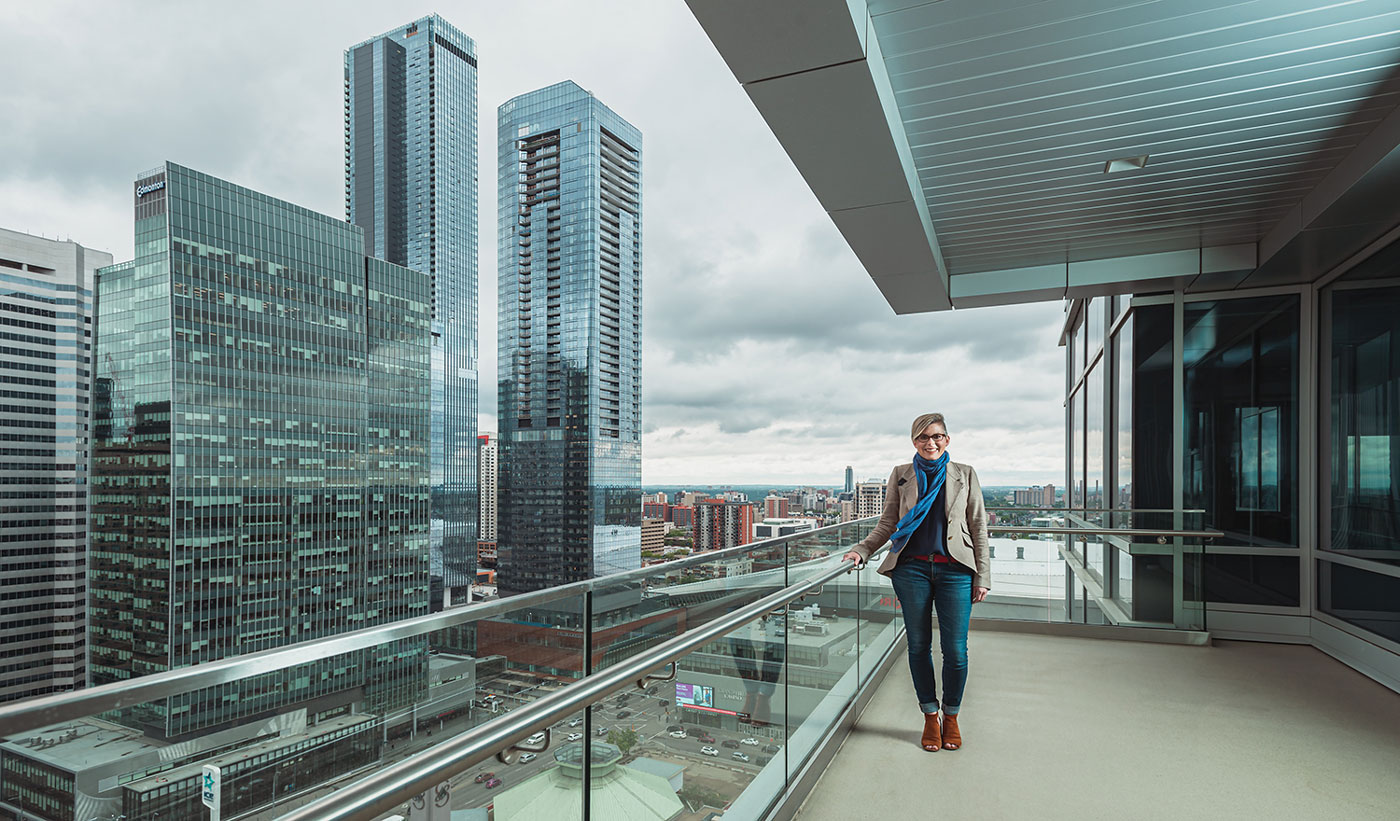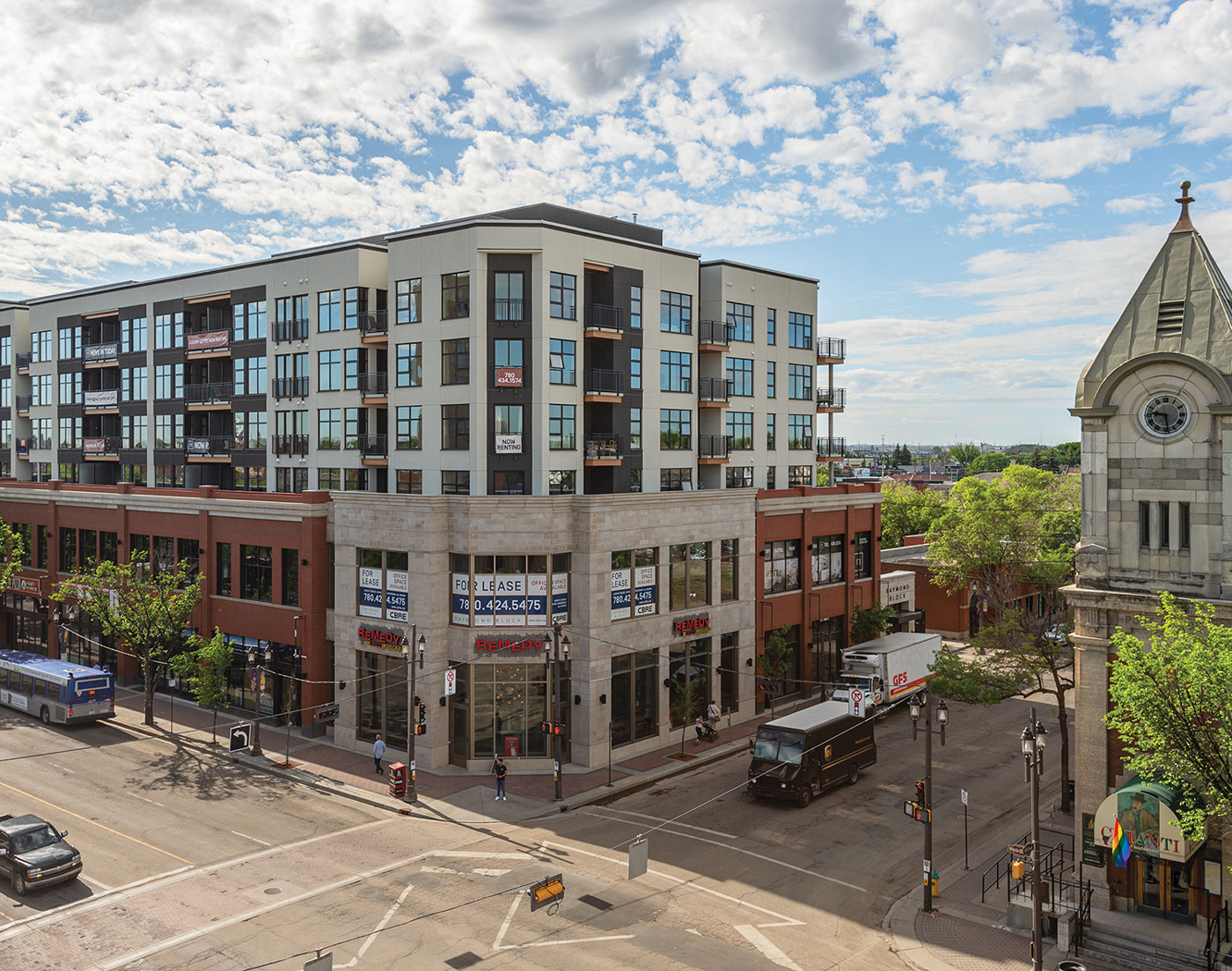
Edmonton has the youngest demographic of any major city in Canada. The median age of an Edmontonian is a hair over 36 years old; that’s three years younger than a Torontonian, four years younger than a Montrealer and almost five years younger than a Vancouverite.
More than 107,000 childless couples call Edmonton home, and nearly 51,000 more couples have just one child.
That means the days of the large Glenora homes, built a century ago and meant to house families of five, six or even seven — well, they’re underpopulated.
So, what does a younger Edmonton mean for those who build our neighbourhoods? A lot.
According to the City of Edmonton’s stats from first quarter of 2019, single-family housing starts were down a stunning 25.2 per cent versus the first quarter of 2018. Meanwhile, the number of apartment starts in the first quarter of 2019 more than doubled over the same period in 2018.
But, over the same time period, there was a 6.3 per cent increase in multi-family starts. Big estate homes aren’t hot. Hip townhouses and slick rental units are.
Why is that? And how will that affect the neighbourhood of the future? We’re seeing a perfect storm in Edmonton. We have a population that has more thirtysomethings, per capita, than other major cities. And, at the same time, we know that more and more people in their late 20s and early 30s are waiting to get married or have kids, if they even choose to at all. They don’t want big homes right now. Sure, they may want to buy a home later, but, because of new mortgage rules, they also have to wait longer to qualify for one.
So, a younger population is creating more demand for rental space.
“There is not a lot of emphasis on size right now, the emphasis is on budget,” says Emmett Hartfield, a Top 40 Under 40 alumnus and partner in Intelligence House, a real-estate consulting company that specializes in analyzing coming market trends.
And why are rentals outpacing condos? Value — or the perceived value. In a city with a metro population of 1.2 million, Hartfield says there is “only so much of demand” for condos. If a smaller home, with yard and no condo fees or condo board to deal with, is available in the city for a price comparable to the condo, people here still choose the house. But, before they are ready for the house, they rent.

Intelligence House is aligned with Raymond Block, which caters to the luxury rental market. It opened for rentals in autumn of 2018; by the spring, it was fully subscribed. And Hartfield said that almost all of the tenants are thirty- or twenty-something professionals. Lawyers, nurses who work at the University of Alberta Hospital, young financial managers.
Salima Kheraj, a Top 40 Under 40 alumna, is the new chief innovation officer for Beaverbrook Communities. She says that the rise in rental properties coming online can’t be ignored, and that many people are choosing to rent because they’re not passing the standards in the mortgage stress tests the CMHC introduced a couple of years ago. She said it’s fair to say that 30 per cent of potential homebuyers are out of the market — at least temporarily — because of the newer, stricter rules.
So, she said developers are already looking to “see how we can make our product lines more affordable. There will always be someone looking for another niche.” She said that the psychology of the disqualified homebuyer makes for an interesting study. Imagine you find the home of your dreams. You tour it, and imagine the welcome mat already outside the front door. When you find out you don’t qualify, you’re crushed. What you don’t do is “settle” for a cheaper alternative. You decide to rent instead, and wait for your circumstances to change.
“Our research shows that here is still a strong desire for people to own single-family homes,” she says. “And that usually coincides with a major life event; wedding, expecting a child.”
But, Kheraj says there’s one question that needs to be answered. With so many new rental properties coming online, what happens to the old ones?
“I think it’s going to be interesting to see how our market will evolve,” says Kheraj. “But what will happen to the old rental stock? Will they remain rentals, or will we be seeing building being repurposed?”

Kalen Anderson has a pretty big job on her hands. She is in charge of building a new City Plan, one that will help guide the city’s growth from one to two million residents over the decades to come.
But, there’s a catch. In the past, growth was addressed by expanding the city’s borders, by annexing land, by pushing out. Not this time. The doubling of the city’s population must happen within the Edmonton’s current boundaries.
To do this, Anderson believes Edmonton has to become what she calls a “rebuildable city.” Even though Edmonton is a young city, with many new families filling up new subdivisions and swamping new schools along the Anthony Henday ring, we can’t think of these communities only in the here and now. Yes, we’re young now, but that means this generation will age together, the kids will move out and these neighbourhoods will need to be redeveloped in order to attract new residents and refill the schools. And this needs to happen in a way that’s more modular and not as painful as the efforts to bring infill into Edmonton’s mature neighbourhoods of today.
“We have to build communities knowing that they may have to be redeveloped, not just once but maybe 10 times,” says Anderson. “The thing is that a great city is intergenerational. Remember that even these new neighbourhoods of today will be somebody’s cherished mature neighbourhoods of the future.”
The cycle of neighbourhoods is simple; when it is built, new families move in, the kids fill up the local school. The nests empty at nearly the same time. To make sure these areas remain vibrant, updates will be needed.
It’s one of the oldest bits of real-estate wisdom. “Location, location, location.”
Except that it isn’t really true anymore. For sure, a home overlooking the river valley is still very desirable. But the truth is, that property isn’t attainable for the majority of the population. With those new mortgage rules and rising property values, not everyone can choose to be downtown or in a neighbourhood close to the core.
So, instead, the focus is moving to what Ryan Andrews calls “amenity-based development.” That is, where you live has the amenities you need, fairly close to your front door. Parks. Rec centres. Grocery stores. Pharmacies. Medical offices.
“People are looking for value right now, it’s a buyer’s market,” says Andrews, president of Landrex Ventures.
So, instead of bringing the subdivision to the location, homebuyers want their new neighbourhoods to be locations unto themselves. It’s a big change in thinking — but one that’s been spurred by the affordability gap.
And with that comes pressure to build better sidewalks, install more attractive lampposts, the little things that can make a community attractive.
And that leads us to…
To accommodate Edmonton’s young population, Anderson believes diversity in housing choices is key. There needs to be density to accommodate those who have yet to settle down, multigenerational homes for those living with their parents, affordable homes for young families. There needs to be access to groceries and a drug store that’s open late at night. You don’t want to drive across the city for the kids’ swimming lessons or soccer games.
“It is definitely quite meaningful that we have the youngest average population of any big city in Canada,” says Anderson.
But the problem is this: As much as we try to make our neighbourhoods walkable, it’s just not possible to have everything a person needs to be within a five-minute jaunt from his or her front door. So, as part of the new City Plan, Anderson isn’t looking at each neighbourhood in isolation. The plan is to take several neighbourhoods and group them into a district. A number of neighbourhoods will make a district, and a number of districts will make a city.
While each neighbourhood won’t have all the vital amenities, each district will. So, while you might not have the doctor’s office on your block, there will be a medical centre in your district, so you also won’t have to haul across town, either.
In mature neighbourhoods, you can barely see a street without a construction site. Old houses are going down. Newer, more expensive homes are replacing them.
And while these are common sites in Westmount, Glenora and Garneau, what’s next? Well, the “second ring,” suburbs built from the 1960s to 1980s, is reaching maturity. Think of homes near Southgate, or the communities that sprung up around West Edmonton Mall. It is time for these communities to be revitalized and renewed.
But Anderson said it’s not quite as straightforward as revitalizing the older neighbourhoods. Walk through Westmount, for example, and all of the homes sit on nice even lots on a grid system. Knock down two homes, put the two lots together, and a dense multi-family unit can go up. It’s like taking down Lego and rebuilding in the same slot.
But, from the 1960s on, we went away from the grid system. We have bendy roads circling parks. We have cul-de-sacs and crescents. We have odd-shaped lots. So, that presents a challenge when it comes to redevelopment.
That’s why Anderson believes a lot of the revitalization in these communities will be spurred in commercial areas, where strip malls or small blocks of commercial space will be renewed.
Communities can’t remain static. It’s a balance. You want to retain the charm that a mature neighbourhood provides, but you also want to offer diverse housing and amenities that will entice young families to move in. A new generation awaits.
This article appears in the August 2019 issue of Avenue Edmonton








